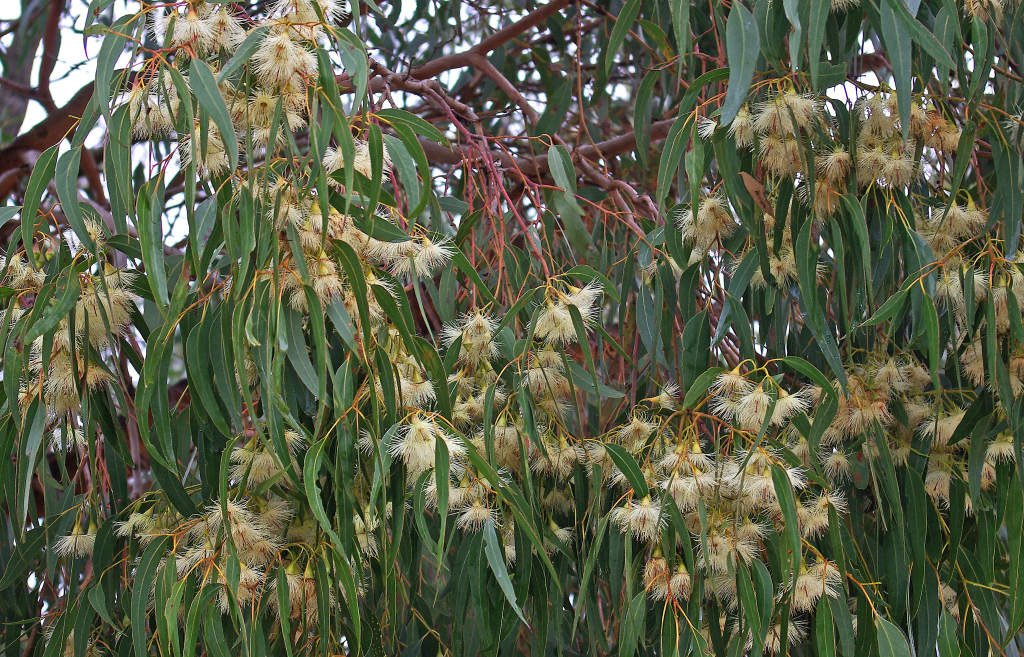Eucalyptus tricarpa
(L.A.S.Johnson) L.A.S.Johnson & K.D.Hill IronbarkTree to 35 m tall; bark rough over whole trunk and branches, thick, hard, furrowed, black (ironbark). Juvenile leaves petiolate, opposite for few pairs then alternate, narrowly to broadly lanceolate, to 17 cm long, 4 cm wide, more or less discolorous, green or greyish-green or glaucous; adult leaves petiolate, alternate, lanceolate, 9.5–22 cm long, 1–2 cm wide, concolorous, green or glaucous; reticulation dense with numerous intersectional oil glands. Inflorescences axillary, unbranched; peduncles to 1.8 cm long, 3-flowered; buds pedicellate, ovoid, to 1.7 cm long, 0.8 cm diam., no scar (2 opercula intact); operculum conical to beaked; stamens inflexed with outer staminodes anthers adnate, cuboid; ovules in 4 vertical rows; flowers white, rarely pink. Fruit pedicellate, truncate-globose, to 1.4 cm long, 1.4 cm diam.; staminal ring deciduous; disc descending; valves 5 or 6, below rim; seed brown, irregularly ovoid and slightly flattened, surface shallowly reticulate, hilum ventral.
Wim, VVP, VRiv, MuF, GipP, OtP, Gold, CVU, GGr, DunT, NIS, EGL, EGU, WPro, HSF, OtR.
2 subspecies.
Strongly pruinose plants from the St. Arnaud district are included in Eucalyptus tricarpa subsp. decora. There are several other localised forms in Victoria that appear might warrant taxonomic recognition.
Presumed hybrids with E. viridis have been recorded near Inglewood (see E. ×blackburniana).
Brooker, M.I.H.; Slee, A.V. (1996). Eucalyptus. In: Walsh, N.G.; Entwisle, T.J., Flora of Victoria Vol. 3, Dicotyledons Winteraceae to Myrtaceae, pp. 946–1009. Inkata Press, Melbourne.
 Spinning
Spinning


